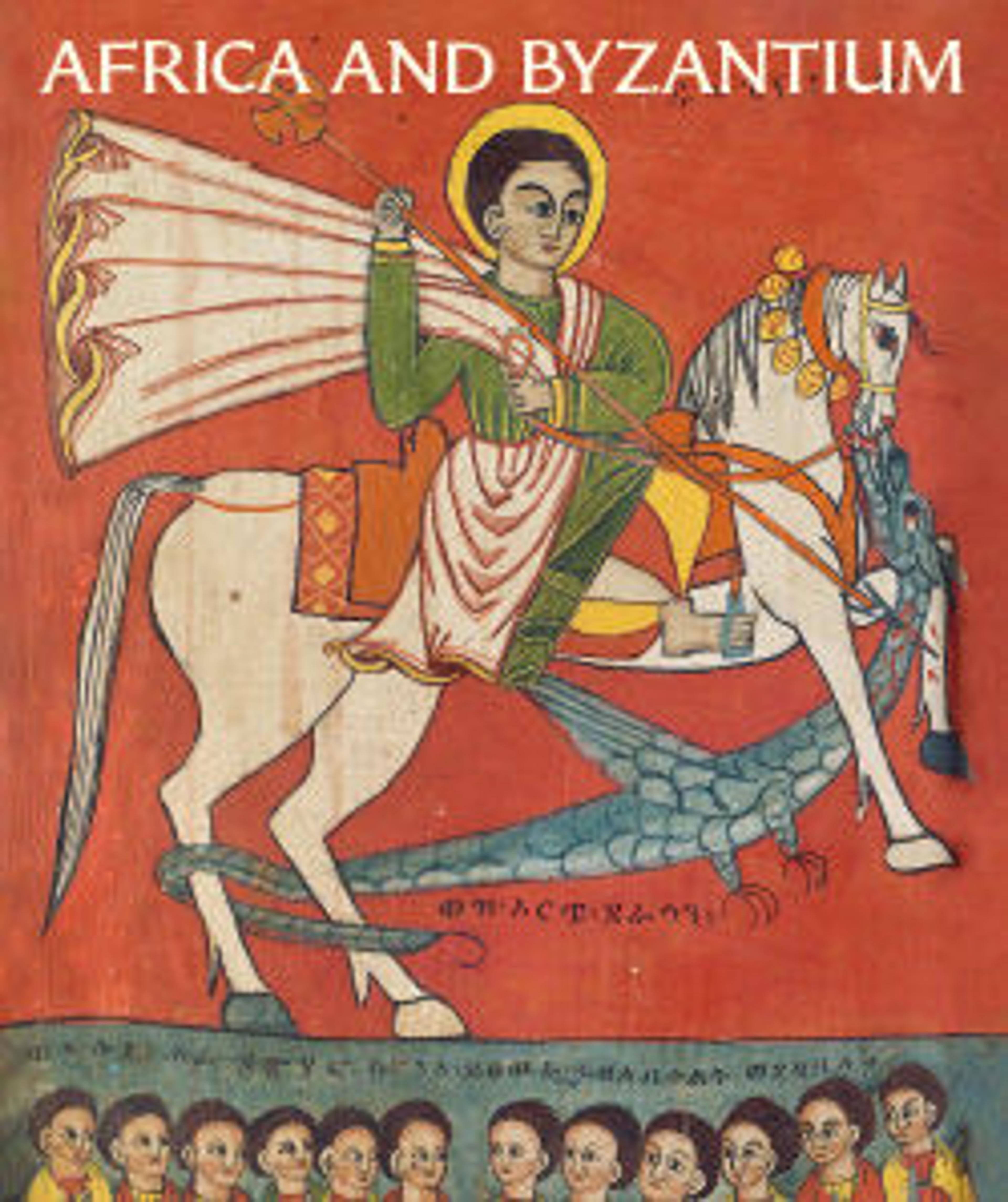English
Jaharis Byzantine Lectionary
Illuminated manuscripts written in Greek were considered one of the greatest art forms by the highly literate and sophisticated clerical and secular elite of Byzantium. Over the centuries many works were commissioned for use in important churches. The calendar in this lectionary and the quality of the entire work suggest that the manuscript was made for the great church of Hagia Sophia in Constantinople.
The Gospels were central to the liturgy of the Orthodox church. At the Little Entrance, which introduced the Liturgy of the Word, the deacon presented the Gospel to the faithful. In the middle Byzantine era, the lectionary replaced the Gospel book as the most widely used text by the church. In it Gospel texts were rearranged by the sequence in which they were read during the liturgical year, which begins at Easter in the Orthodox church. Often, as in this manuscript, the liturgical calendar and the lives of saints who were celebrated daily were included in the text. Highly trained scribes wrote the texts to which were added the elaborately colored initials for special readings and the illuminations that added great value to the work.
The Evangelist Matthew (fol. 43r)
The customary decoration for lectionaries included portraits of the Four Evangelists, beginning with John whose text is read at Easter. In this illumination, the white-haired, bearded evangelist Matthew sits before a city wall; his name is inscribed in Greek above. His pose echoes that of ancient philosophers as adopted for Christian use. God's hand descends from the arc of the blue heaven, directly inspiring the writer at his desk. The writing table includes all the implements needed by a scribe, including a scroll ready for the words of the text. The evangelist's face is subtly modulated; his garments and the cityscape behind are defined in pastel hues. The elegantly articulated border echoes the patterns widely seen in cloisonné enamel works of the period.
The incipit, or first letter, of the handsome script written in gold presents a small child raising his hands to a seated image of Christ. The scene reflects the first lines of the reading: "The Lord said: See that you never despise one of these little ones" (Matthew 18:10).
The Gospels were central to the liturgy of the Orthodox church. At the Little Entrance, which introduced the Liturgy of the Word, the deacon presented the Gospel to the faithful. In the middle Byzantine era, the lectionary replaced the Gospel book as the most widely used text by the church. In it Gospel texts were rearranged by the sequence in which they were read during the liturgical year, which begins at Easter in the Orthodox church. Often, as in this manuscript, the liturgical calendar and the lives of saints who were celebrated daily were included in the text. Highly trained scribes wrote the texts to which were added the elaborately colored initials for special readings and the illuminations that added great value to the work.
The Evangelist Matthew (fol. 43r)
The customary decoration for lectionaries included portraits of the Four Evangelists, beginning with John whose text is read at Easter. In this illumination, the white-haired, bearded evangelist Matthew sits before a city wall; his name is inscribed in Greek above. His pose echoes that of ancient philosophers as adopted for Christian use. God's hand descends from the arc of the blue heaven, directly inspiring the writer at his desk. The writing table includes all the implements needed by a scribe, including a scroll ready for the words of the text. The evangelist's face is subtly modulated; his garments and the cityscape behind are defined in pastel hues. The elegantly articulated border echoes the patterns widely seen in cloisonné enamel works of the period.
The incipit, or first letter, of the handsome script written in gold presents a small child raising his hands to a seated image of Christ. The scene reflects the first lines of the reading: "The Lord said: See that you never despise one of these little ones" (Matthew 18:10).
Artwork Details
- Title: Jaharis Byzantine Lectionary
- Date: ca. 1100
- Geography: Made in Constantinople
- Culture: Byzantine
- Medium: Tempera, gold, and ink on parchment; leather binding
- Dimensions: Overall: 14 1/2 x 11 5/8 x 4 7/8 in. (36.8 x 29.6 x 12.4 cm)
folio: 13 3/4 x 10 5/16 in. (35 x 26.2 cm) - Classification: Manuscripts and Illuminations
- Credit Line: Purchase, Mary and Michael Jaharis Gift and Lila Acheson Wallace Gift, 2007
- Object Number: 2007.286
- Curatorial Department: Medieval Art and The Cloisters
More Artwork
Research Resources
The Met provides unparalleled resources for research and welcomes an international community of students and scholars. The Met's Open Access API is where creators and researchers can connect to the The Met collection. Open Access data and public domain images are available for unrestricted commercial and noncommercial use without permission or fee.
To request images under copyright and other restrictions, please use this Image Request form.
Feedback
We continue to research and examine historical and cultural context for objects in The Met collection. If you have comments or questions about this object record, please contact us using the form below. The Museum looks forward to receiving your comments.
